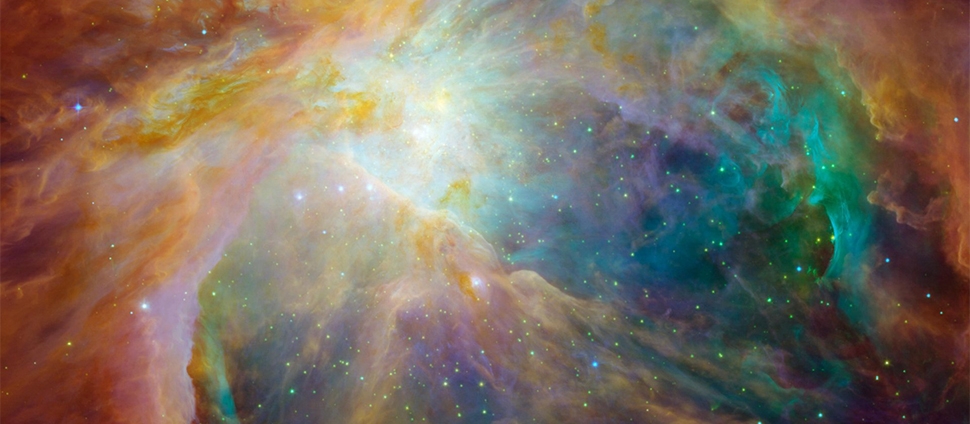Document Type
Article
Publication Date
2-27-2015
Publication Title
The Astrophysical Journal
Abstract
In this paper we investigate the origin of the mid-infrared (IR) hydrogen recombination lines for a sample of 114 disks in different evolutionary stages (full, transitional, and debris disks) collected from the Spitzer archive. We focus on the two brighter H I lines observed in the Spitzer spectra, the H I (7-6) at 12.37 μm and the H I (9-7) at 11.32 μm. We detect the H I (7-6) line in 46 objects, and the H I (9-7) in 11. We compare these lines with the other most common gas line detected in Spitzer spectra, the [Ne II] at 12.81 μm. We argue that it is unlikely that the H I emission originates from the photoevaporating upper surface layers of the disk, as has been found for the [Ne II] lines toward low-accreting stars. Using the H I (9-7)/H I (7-6) line ratios we find these gas lines are likely probing gas with hydrogen column densities of 1010-1011 cm–3. The subsample of objects surrounded by full and transitional disks show a positive correlation between the accretion luminosity and the H I line luminosity. These two results suggest that the observed mid-IR H I lines trace gas accreting onto the star in the same way as other hydrogen recombination lines at shorter wavelengths. A pure chromospheric origin of these lines can be excluded for the vast majority of full and transitional disks. We report for the first time the detection of the H I (7-6) line in eight young (<20 >Myr) debris disks. A pure chromospheric origin cannot be ruled out in these objects. If the H I (7-6) line traces accretion in these older systems, as in the case of full and transitional disks, the strength of the emission implies accretion rates lower than 10–10 M ☉ yr–1. We discuss some advantages of extending accretion indicators to longer wavelengths, and the next steps required pinning down the origin of mid-IR hydrogen lines.
Keywords
accretion, accretion disks, circumstellar matter, infrared: stars, line: identification, stars: activity
Volume
801
Issue
1
DOI
10.1088/0004-637X/801/1/31
Rights
©2015 The American Astronomical Society. All rights reserved.
Version
Version of Record
Recommended Citation
Rigliaco, Elisabetta; Pascucci, Ilaria; Duchene, Gaspard; Edwards, Suzan; Ardila, D. R.; Grady, C.; Mendigutía, Ignacio; Montesinos, Benjamín; Mulders, Gijs D.; Najita, Joan R.; Carpenter, J.; Furlan, Elise; Gorti, Uma; Meijerink, Rowin; and Meyer, M. R., "Probing Stellar Accretion with Mid-Infrared Hydrogen Lines" (2015). Astronomy: Faculty Publications, Smith College, Northampton, MA.
https://scholarworks.smith.edu/ast_facpubs/26


